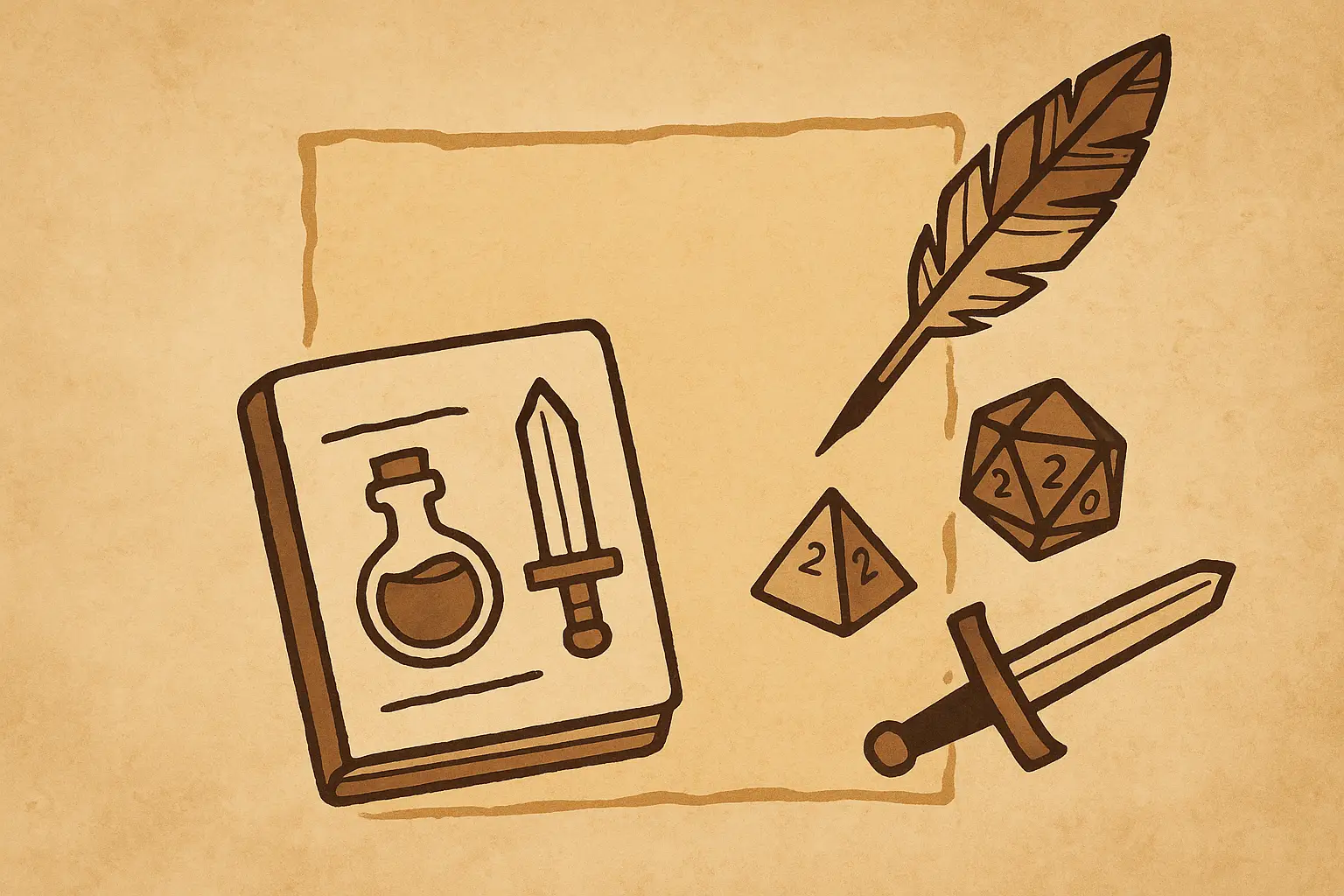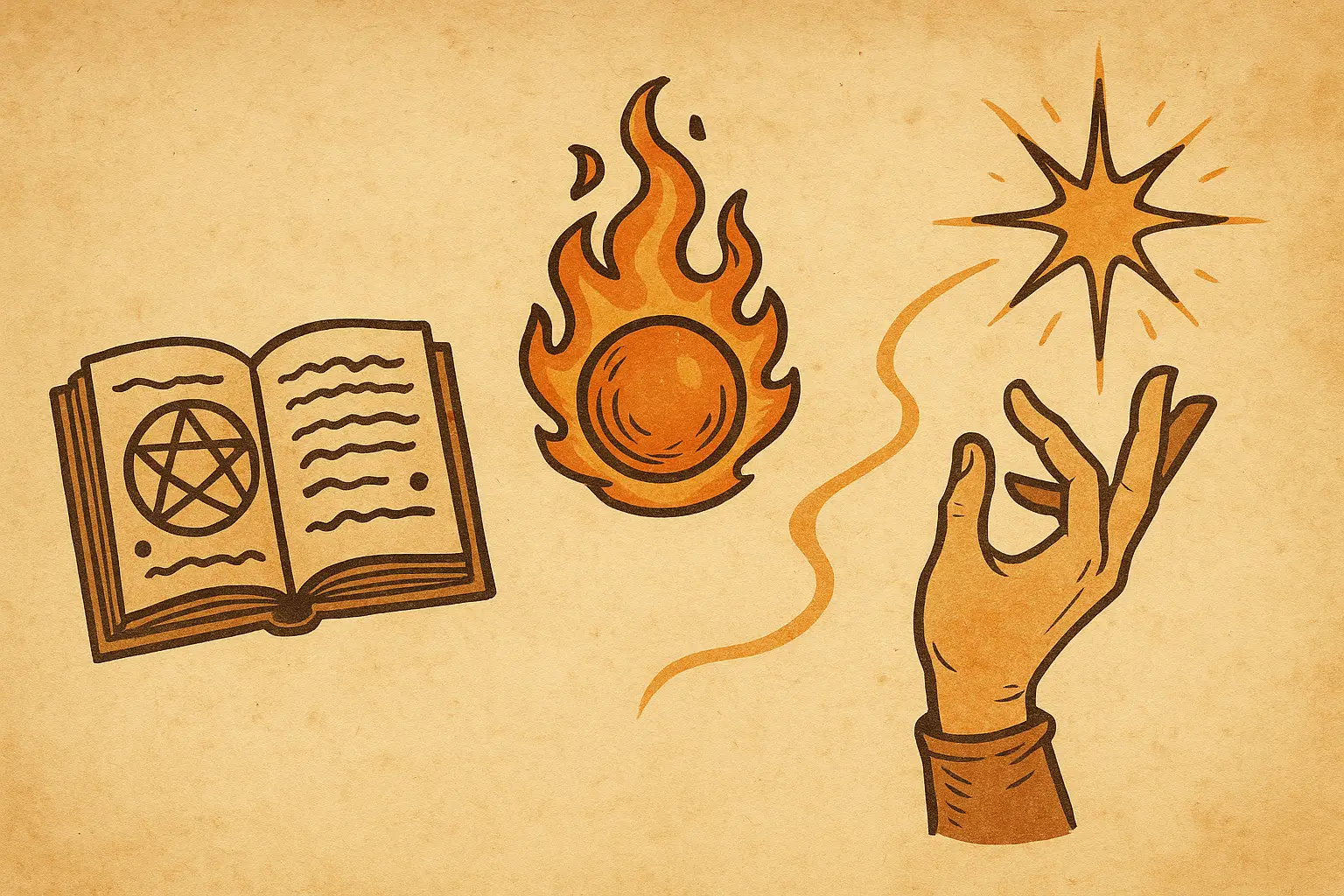How to create magical mechanics that are powerful, playable, and unforgettable
Magic is the beating heart of most fantasy tabletop RPGs. It’s the tool that bends reality, the power players crave, and the source of countless legendary moments—from a clutch Fireball to a spontaneous wish that rewrites the campaign.
But for Game Masters and designers, magic is also one of the hardest things to get right.
Design it too loose, and it breaks the game. Too strict, and it loses wonder. Too complicated, and players ignore it. Too shallow, and it becomes little more than flavored damage.
Today on RPGInquisitor, we’re diving into the art and science of designing balanced, flavorful, and fun magic systems. Whether you’re homebrewing new spells, adapting existing mechanics, or building an entire system from scratch, this is your guide to getting it right—and making it memorable.
🎯 What Makes a Magic System “Good”?
A successful magic system should be:
- Thematically consistent
- Mechanically clear
- Flexible in use
- Fun to interact with
- Balanced across narrative and mechanics
That’s a tall order—but not impossible. Whether you’re designing firebolt variants or full-blown divine miracles, great magic systems follow a few golden rules.
🔧 Step 1: Define the Rules of Reality
Before you write your first spell, decide:
How does magic work in your world?
- Is it learned through study, granted by a god, drawn from emotion, or fueled by chaos?
- Are spells crafted or discovered?
- Is magic structured like science—or is it unpredictable and wild?
- Does magic have a cost?
Establishing the internal logic of your magic system makes it easier to design consistent spells and mechanics.
Example: If magic is emotion-based, spells tied to rage or sorrow might be easier to cast but harder to control.
📚 Step 2: Choose Your Structure
How is magic organized mechanically?
Common Structures:
- Spell Slots (Vancian): Limited-use spells that must be prepared or chosen ahead of time. Traditional, tactical, and easy to balance.
- Mana Points / Energy Pools: Spendable resources. Flexible, but needs tight cost balancing.
- Risk-Based Casting: The more you cast, the higher the risk of failure, corruption, or damage. Great for dark or horror-themed magic.
- Cantrip + Scaling: Core cantrips + leveled spells that scale with class level. Popular for simplicity.
Each structure supports a different tone and playstyle.
🧠 Step 3: Consider the Pillars of Magic Design
1. Power
How strong is the spell? What level of impact does it have on combat, exploration, or narrative?
Ask:
- Is this spell better than similar options?
- Can it break an encounter?
- Does it render other abilities obsolete?
2. Versatility
Can this spell be used creatively? Is it only for damage, or does it also solve puzzles, support roleplay, or create world interaction?
3. Cost
- Action economy: Is it a reaction? Bonus? Concentration?
- Resource drain: Does it use limited points or slots?
- Narrative cost: Does casting it expose the caster? Draw attention? Harm others?
Spells feel more satisfying when they have limits that force choices.
🎭 Step 4: Design Spells That Tell Stories
Great spells aren’t just tools. They’re plot devices, character beats, and story catalysts.
Here’s how:
Add Visual & Sensory Flavor
Instead of “A fireball explodes,” say “A whirling sphere of flame erupts from your hand, cracking the air with a thunderous roar as it scorches everything within reach.”
Give your spells:
- Color
- Sound
- Smell
- Aftereffects
Let players feel the magic.
Make Spells Cultural or Personal
Spells can reflect:
- Regional traditions
- Magical schools
- Personal quirks (e.g., the wizard’s sleep spell always smells like lavender)
This adds depth and individuality to a system that might otherwise feel generic.
🧪 Step 5: Build Spells with Purpose
Let’s break down a template for building a balanced, playable, and flavorful spell.
🎲 Sample Template:
Name: Flesh to Fog
Level: 3rd
School: Transmutation
Casting Time: 1 Action
Range: 60 ft
Duration: Concentration, up to 1 minute
Effect: One creature becomes semi-incorporeal. They gain resistance to bludgeoning, piercing, and slashing damage but can no longer cast spells or speak. Each round, they must succeed on a Constitution save or lose control and float 10 ft in a random direction.
Narrative Use: Escape tool, emergency defense, or horrifying transformation ritual.
Tactical Use: Temporarily take a caster or heavy hitter out of action—or protect an ally on the brink of death.
📏 Step 6: Balance By Comparison
Before finalizing a spell, ask:
- Is there an existing spell of similar level and effect?
- Does this one do more, for less cost?
- Could a player “spam” this to bypass mechanics?
If yes, consider:
- Adding cooldowns or preparation requirements
- Introducing risks (backlash, stress, exhaustion)
- Limiting targets, range, or duration
Always test your spells in a few combat scenarios and narrative setups. Balance isn’t just math—it’s feel.
🧩 Step 7: Add Subsystems with Care
If you’re designing a full custom system (like blood magic, elemental bending, or shadow rituals), keep it:
- Simple to learn
- Distinct from existing mechanics
- Scalable across levels
- Full of narrative flavor
Start with a single core mechanic:
- e.g., Blood magic costs HP instead of spell slots
- e.g., Elementalists must attune to a terrain type before casting
Expand only after players get comfortable.
🔮 Bonus Tips for Magical Systems That Spark Wonder
- Introduce new spells in-world: scrolls, tomes, rituals, or NPC mentors
- Let players customize spells over time (signature styles, effects, etc.)
- Use magical mishaps or side effects to keep casting exciting
- Build magic economies—maybe magic can be bought, bartered, or taxed
- Tie major campaign events to shifts in the magic system
🧠 Final Thoughts: Let Magic Matter
Magic isn’t just about bending the rules.
It is the rules—rewritten with style, risk, and wonder.
Whether you’re crafting new spells, tweaking casting mechanics, or homebrewing an entire system, your goal is the same:
Make magic feel powerful.
Make magic feel dangerous.
Make magic feel magical.
And above all?
Let it create stories your players will never forget.

